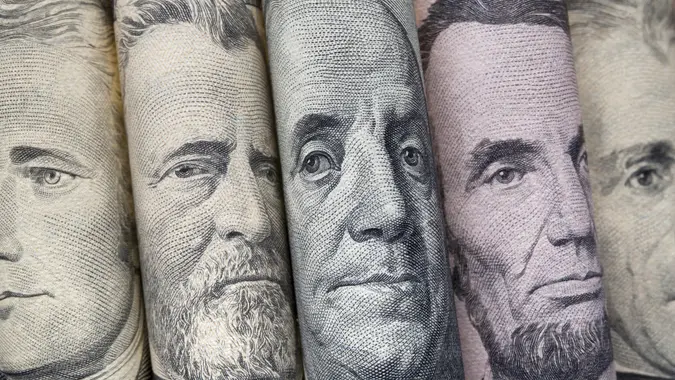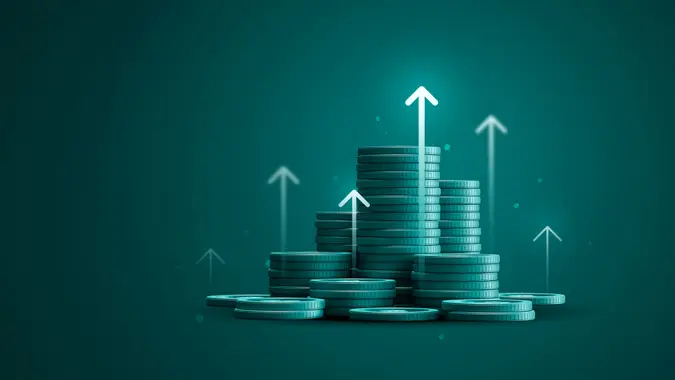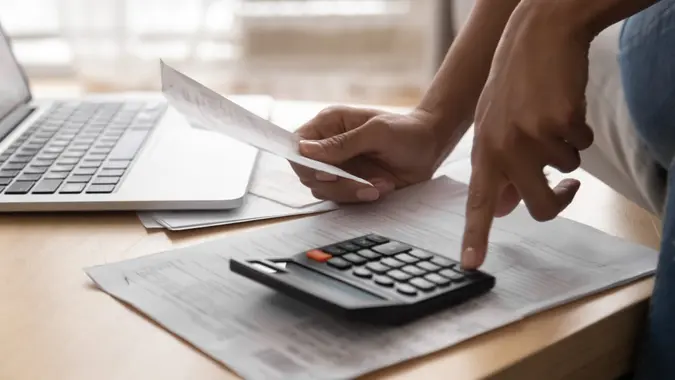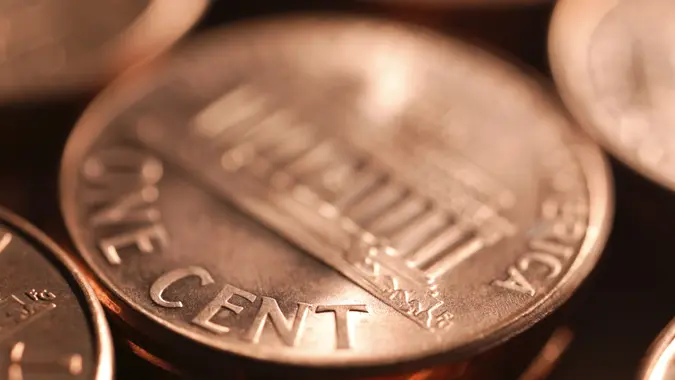10 Rare Bills Expected To Soar in Value Before the End of 2025

Commitment to Our Readers
GOBankingRates' editorial team is committed to bringing you unbiased reviews and information. We use data-driven methodologies to evaluate financial products and services - our reviews and ratings are not influenced by advertisers. You can read more about our editorial guidelines and our products and services review methodology.

20 Years
Helping You Live Richer

Reviewed
by Experts

Trusted by
Millions of Readers
Many people dream of finding a rare, valuable bill in their wallet or in the back of a drawer somewhere. While it’s unlikely that the average person will stumble upon paper currency worth tens of thousands of dollars, there’s always a chance — and isn’t that part of the fun of treasure hunting?
Paper currency has gone through so many changes since its inception so many centuries ago. Over time, some bills (and denominations) have gone out of print while others have become increasingly rare. The few that are still around and in good condition have become quite valuable.
If you’re curious about whether or not you have a rare bill that’s either worth a lot now or could soar in value in the next year or so, here are some predictions.
Note that these predictions are based on these bills’ current and recent historical value. If you find a rare bill, you may still want to get it appraised to determine its actual value.
$10 National Gold Bank Notes
- Value: $1,000 to $10,000
- Grading: N/A
1882 $5 Brown Back Banknote
- Value: $7,380
- Grading: 66 (gem uncirculated)
1890 U.S. Grand Watermelon $1,000 Treasury Note
- Value: Over $1 million
- Grading: 50 (about uncirculated)
Triple Signature $10 Silver Certificate
- Value: Over $40,000
- Grading: 30 (very fine)
1901 $10 Banknote
- Value: $2,200
- Grading: 35 (very fine)
1900 $10,000 Gold Certificate
- Value: $4,695
- Grading: 20 (very fine)
1922 $10 Gold Certificate Large Size Note
- Value: $2,735.16
- Grading: 67 (superb gem uncirculated)
$1 Original Delaware Note
- Value: $1,680
- Grading: 30 (very fine)
1928 $500 (D-Cleveland)
- Value: $2,695
- Grading: 25 (very fine)
1882 $10 Brown Back Territorial National Bank Note
- Value: $200 to over $2,000
- Grading: 20 (very fine)
Grading Rare Bills
When it comes to paper currency, there are two main grading systems used to determine a note’s value and condition:
- PMG: “PMG certification makes it easier to determine a note’s value because collectors, dealers and auction houses around the world trust, understand and use PMG’s grades,” according to the official website. It also makes it easier for collectors to research the value of different notes.
- PCGS: The PCGS grades paper currency on a scale of one (poor) to 70 (supreme gem uncirculated). Generally speaking, the higher the grading, the more valuable the note.
Predicting a Bill’s Future Value
Ultimately, there are no guarantees as to how much paper currency — or most anything else — will be worth in a year or two. The future, after all, is not set in stone.
That said, you may be sitting on something highly valuable if it meets one or more of the following conditions:
- It has a high PCGS or PMG grading.
- It’s got a noticeable size discrepancy (larger or smaller than standard bills).
- It’s no longer in circulation.
- It has an unusually high denomination (e.g., $500).
- It’s got a high serial number.
- It has misprints like a different denomination on the back and front.
- It’s exceedingly old but still in decent condition.
If you’re not sure how valuable your old bills might be, you can always check with an online auction house like Heritage Auctions to get a free estimate.
You can also take your currency to a local coin dealer who also specializes in rare bills. Or you can go to an online forum like r/Currency and ask about your bill there. You may need to take photographs for a more accurate answer.
 Written by
Written by  Edited by
Edited by 

























